Difference between revisions of "Downloads"
| Line 81: | Line 81: | ||
The python stochastic tractography module contains the tools necessary to extract, visualize and quantify white matter connections from DTI images. It seeds nerve fiber bundles from regions of interest (ROIs) based on DWI images. Unlike streamline tractography, stochastic tractography uses a probabilistic framework to perform tractography. | The python stochastic tractography module contains the tools necessary to extract, visualize and quantify white matter connections from DTI images. It seeds nerve fiber bundles from regions of interest (ROIs) based on DWI images. Unlike streamline tractography, stochastic tractography uses a probabilistic framework to perform tractography. | ||
|- | |- | ||
| − | + | |[[Image:WhiteMatterLesions-i.png]] | |
| − | + | |[[media:Slicer3Training_WhiteMatterLesions_v2.3.pdf|Classification of White Matter Lesions for Lupus]]<br> | |
| − | | | ||
| − | [[media:Slicer3Training_WhiteMatterLesions_v2.3.pdf|Classification of White Matter Lesions for Lupus]]<br> | ||
This tutorial demonstrates an automated, multi-level method to segment white matter brain lesions in lupus. Following this tutorial, you’ll be able to load scans into Slicer3, and segment and measure the volume of white matter lesions on the provided data-set. | This tutorial demonstrates an automated, multi-level method to segment white matter brain lesions in lupus. Following this tutorial, you’ll be able to load scans into Slicer3, and segment and measure the volume of white matter lesions on the provided data-set. | ||
|- | |- | ||
| − | + | |[[Image:TransRectal-i.png]] | |
| − | + | |[[media:DBP2JohnsHopkinsTransRectalProstateBiopsy_TutorialPres2009June.pdf|Trans-rectal MR guided prostate biopsy]] and [[Media:PerkStationSlicerTutorial.pdf|PerkStationSlicerTutorial]]<br> | |
| − | | | ||
| − | [[media:DBP2JohnsHopkinsTransRectalProstateBiopsy_TutorialPres2009June.pdf|Trans-rectal MR guided prostate biopsy]] and [[Media:PerkStationSlicerTutorial.pdf|PerkStationSlicerTutorial]]<br> | ||
This tutorial will teach you how to perform MR-guided prostate biopsy using MR-compatible trans-rectal robot with SLICER. | This tutorial will teach you how to perform MR-guided prostate biopsy using MR-compatible trans-rectal robot with SLICER. | ||
|- | |- | ||
| − | + | |[[Image:Arctic-i.png]] | |
| − | + | |[[media:ARCTIC-Slicer3-Tutorial.ppt|ARCTIC: Automatic Regional Cortical ThICkness Analysis for Autism]]<br> | |
| − | | | ||
| − | [[media:ARCTIC-Slicer3-Tutorial.ppt|ARCTIC: Automatic Regional Cortical ThICkness Analysis for Autism]]<br> | ||
Following this tutorial, you will be able to perform an individual analysis of regional cortical thickness. You will learn how to load input volumes, run the end-to-end module ARCTIC to generate cortical thickness information and display output volumes. | Following this tutorial, you will be able to perform an individual analysis of regional cortical thickness. You will learn how to load input volumes, run the end-to-end module ARCTIC to generate cortical thickness information and display output volumes. | ||
| − | |||
|- | |- | ||
| − | + | |[[Image:Confocal-i.png]] | |
| − | + | |[[media:Microscopy-Confocal-TrainingTutorial-2009JUNE.pdf|Confocal Microscopy]]<br> | |
| − | | | ||
| − | [[media:Microscopy-Confocal-TrainingTutorial-2009JUNE.pdf|Confocal Microscopy]]<br> | ||
Guiding you step by step through the process of loading confocal microscopy data, working with that data, and creating a 3D model for visualization. | Guiding you step by step through the process of loading confocal microscopy data, working with that data, and creating a 3D model for visualization. | ||
|- | |- | ||
| − | + | |[[Image:Primate-i.jpg]] | |
| − | + | |[[media:EMSegment_TrainingTutorial.pdf| Non-human Primates Segmentation Tutorial]]<br> | |
| − | | | ||
| − | [[media:EMSegment_TrainingTutorial.pdf| Non-human Primates Segmentation Tutorial]]<br> | ||
The objective of this tutorial is to demonstrate how to use EM Segmenter to segment non-human primate images. | The objective of this tutorial is to demonstrate how to use EM Segmenter to segment non-human primate images. | ||
|- | |- | ||
| − | + | |[[Image:Hammer-i.png]] | |
| − | + | |[[AHM 2010 Tutorial Contest - Hammer Registration | Hammer Registration for Brain MRI]]<br> | |
| − | | | ||
| − | [[AHM 2010 Tutorial Contest - Hammer Registration | Hammer Registration for Brain MRI]]<br> | ||
Presents HAMMER registration algorithm and introduces how to use HAMMER in Slicer3. | Presents HAMMER registration algorithm and introduces how to use HAMMER in Slicer3. | ||
|- | |- | ||
| − | + | |[[Image:CenterLine-i.png]] | |
| − | + | |[[AHM 2010 Tutorial Contest - CoronaryArteriesCenterlinesVMTK | Centerline Extraction of Coronary Arteries using VMTK]]<br> | |
| − | | | ||
| − | [[AHM 2010 Tutorial Contest - CoronaryArteriesCenterlinesVMTK | Centerline Extraction of Coronary Arteries using VMTK]]<br> | ||
Guiding you step by step through the process of centerline extraction of Coronary Arteries in a cardiac blood-pool MRI using VMTK based Tools. | Guiding you step by step through the process of centerline extraction of Coronary Arteries in a cardiac blood-pool MRI using VMTK based Tools. | ||
|- | |- | ||
| − | + | |[[File:EMFiberClustering-i.png]] | |
| − | + | |[[AHM 2010 Tutorial Contest - EM Fiber Clustering| EM Fiber Clustering]]<br> | |
| − | | | ||
| − | [[AHM 2010 Tutorial Contest - EM Fiber Clustering| EM Fiber Clustering]]<br> | ||
This module clusters a set of input trajectories into a number of bundles, generates arc length parameterization by establishing the point correspondences and reports diffusion parameters along the bundles as well as the membership probability of each trajectory in each cluster. The module requires specification of seed trajectories (or initial centerlines) as representatives of the desired bundles. | This module clusters a set of input trajectories into a number of bundles, generates arc length parameterization by establishing the point correspondences and reports diffusion parameters along the bundles as well as the membership probability of each trajectory in each cluster. The module requires specification of seed trajectories (or initial centerlines) as representatives of the desired bundles. | ||
| + | |} | ||
| − | |||
'''Additional Tutorials''' | '''Additional Tutorials''' | ||
*[http://www.slicer.org/slicerWiki/index.php/Slicer3.4:Training Slicer Training] | *[http://www.slicer.org/slicerWiki/index.php/Slicer3.4:Training Slicer Training] | ||
Revision as of 16:38, 14 May 2010
Home < DownloadsContents
The following is a collection of electronic resources provided by NA-MIC. This includes software, data, tutorials, presentations, and additional documentation.
Software
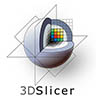
|
Download Slicer A general purpose biomedical computing application with extensive built-in visualization and analysis capabilities, accessible through an easy to use graphical interface. |
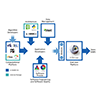
|
Download the NA-MIC Kit, including Slicer The NA-MIC Kit is a free open source software platform. The NA-MIC Kit is distributed under a BSD-style license without restrictions or "give-back" requirements and is intended for research, but there are no restrictions on other uses. It consists of the 3D Slicer application software, a number of tools and toolkits such as VTK and ITK, and a software engineering methodology that enables multiplatform implementations. |
Data
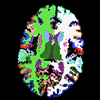
|
Brain: Multi-modality (sMRI, DTI, fMRI) from Schizophrenia Study There are 20 cases: ten are Normal Controls and ten are Schizophrenic. Each case includes a weighted T1 scan, a weighted T2 scan, an fMRI scan, a DTI volume, the DWI with 51 directions, and several masks and labelmaps. Available from Harvard. |
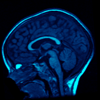
|
Brain: 2-4 Year Old from Autism Study Data for 2 autistic children and 2 normal controls (male, female) scanned at 2 years with follow up at 4 years from a 1.5T Siemens scanner. Files include structural data, tissue segmentation label map and subcortical structures segmentation. Available from UNC. |
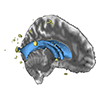
|
Brain: White Matter Lesions for Lupus Study Data for 5 cases of Lupus White Matter Lesion patients. The data is co-registered. Each case contains: T1-weighted, T2-weighted, FLAIR, and masks for brain and lesions. Available from MIND. |
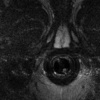
|
Prostate: 5 robot-assisted intervention cases for Prostate Cancer |
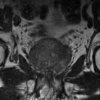
|
Prostate: 10 cases |

|
Prostate: Transrectal Tutorial Dataset |
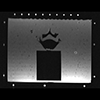
|
Spine Phantom: PerkStation Tutorial Dataset |
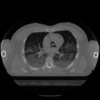
|
Visible Human Datasets |
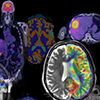
|
Registration Case Library Home Page |
Tutorials
Tutorials for Biomedical Engineers and Clinical Research Users of the NA-MIC Kit (PDF and PPT downloads)

|
Stochastic Tractography to extract, visualize and quantify white matter connections from Diffusion Images in Schizophrenia Study The python stochastic tractography module contains the tools necessary to extract, visualize and quantify white matter connections from DTI images. It seeds nerve fiber bundles from regions of interest (ROIs) based on DWI images. Unlike streamline tractography, stochastic tractography uses a probabilistic framework to perform tractography. |
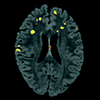
|
Classification of White Matter Lesions for Lupus This tutorial demonstrates an automated, multi-level method to segment white matter brain lesions in lupus. Following this tutorial, you’ll be able to load scans into Slicer3, and segment and measure the volume of white matter lesions on the provided data-set. |

|
Trans-rectal MR guided prostate biopsy and PerkStationSlicerTutorial This tutorial will teach you how to perform MR-guided prostate biopsy using MR-compatible trans-rectal robot with SLICER. |
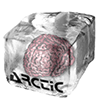
|
ARCTIC: Automatic Regional Cortical ThICkness Analysis for Autism Following this tutorial, you will be able to perform an individual analysis of regional cortical thickness. You will learn how to load input volumes, run the end-to-end module ARCTIC to generate cortical thickness information and display output volumes. |
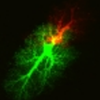
|
Confocal Microscopy Guiding you step by step through the process of loading confocal microscopy data, working with that data, and creating a 3D model for visualization. |
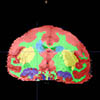
|
Non-human Primates Segmentation Tutorial The objective of this tutorial is to demonstrate how to use EM Segmenter to segment non-human primate images. |

|
Hammer Registration for Brain MRI Presents HAMMER registration algorithm and introduces how to use HAMMER in Slicer3. |
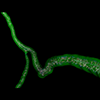
|
Centerline Extraction of Coronary Arteries using VMTK Guiding you step by step through the process of centerline extraction of Coronary Arteries in a cardiac blood-pool MRI using VMTK based Tools. |
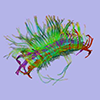
|
EM Fiber Clustering This module clusters a set of input trajectories into a number of bundles, generates arc length parameterization by establishing the point correspondences and reports diffusion parameters along the bundles as well as the membership probability of each trajectory in each cluster. The module requires specification of seed trajectories (or initial centerlines) as representatives of the desired bundles. |
Additional Tutorials